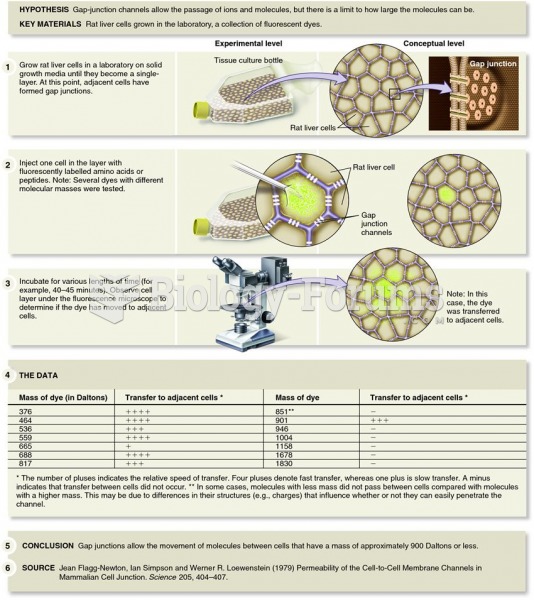|
|
|
Eat fiber! A diet high in fiber can help lower cholesterol levels by as much as 10%.
Once thought to have neurofibromatosis, Joseph Merrick (also known as "the elephant man") is now, in retrospect, thought by clinical experts to have had Proteus syndrome. This endocrine disease causes continued and abnormal growth of the bones, muscles, skin, and so on and can become completely debilitating with severe deformities occurring anywhere on the body.
The horizontal fraction bar was introduced by the Arabs.
About 100 new prescription or over-the-counter drugs come into the U.S. market every year.
Malaria mortality rates are falling. Increased malaria prevention and control measures have greatly improved these rates. Since 2000, malaria mortality rates have fallen globally by 60% among all age groups, and by 65% among children under age 5.
 Use of fluorescent molecules by Lowenstein and colleagues to determine the size of gap-junction chan
Use of fluorescent molecules by Lowenstein and colleagues to determine the size of gap-junction chan
 Note the discovery as the air filter housing was opened during service on a Pontiac Bonneville. The ...
Note the discovery as the air filter housing was opened during service on a Pontiac Bonneville. The ...
 A DC voltage is applied across the spark plug gap after the plug fires and the circuit can determine ...
A DC voltage is applied across the spark plug gap after the plug fires and the circuit can determine ...




